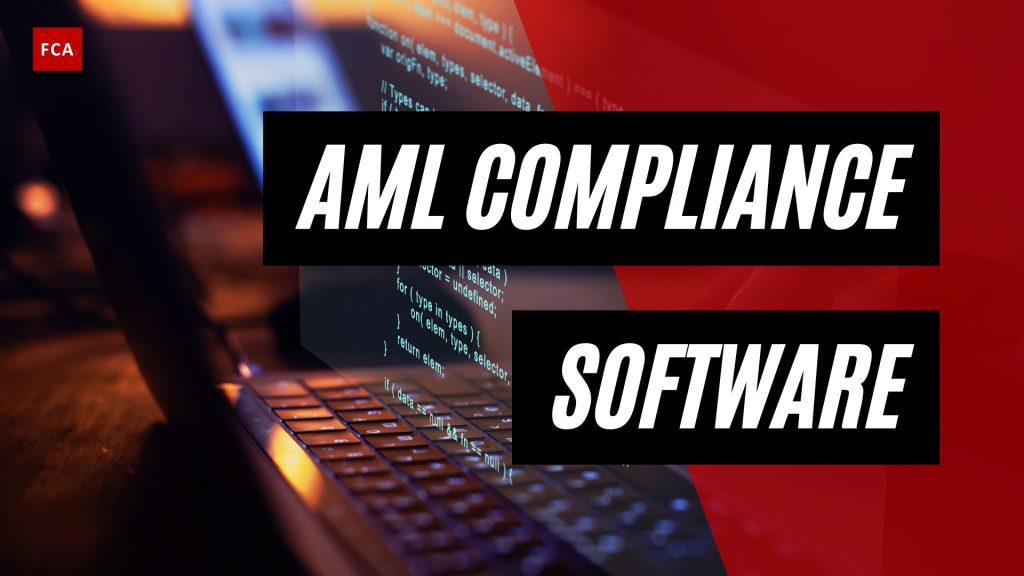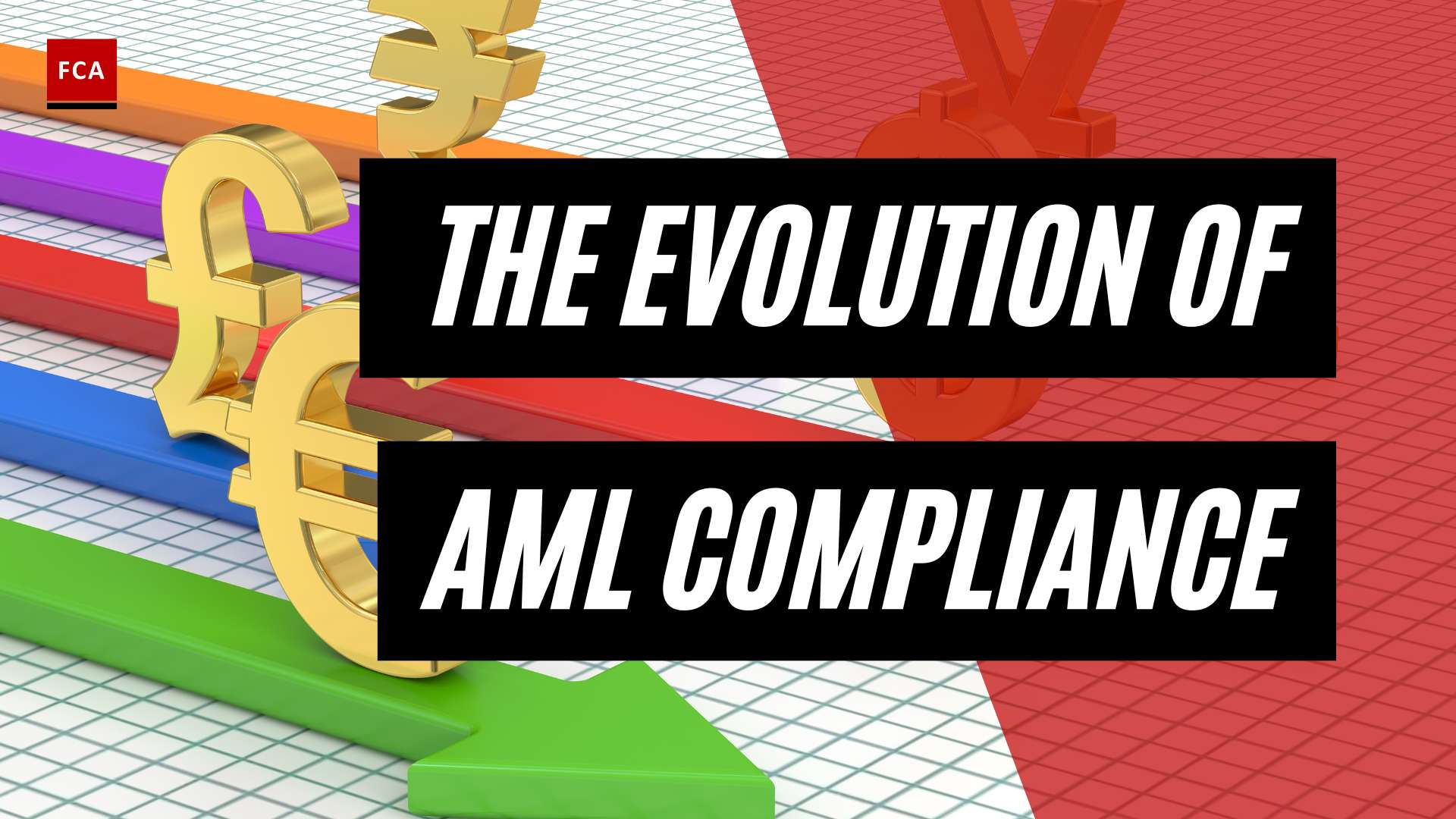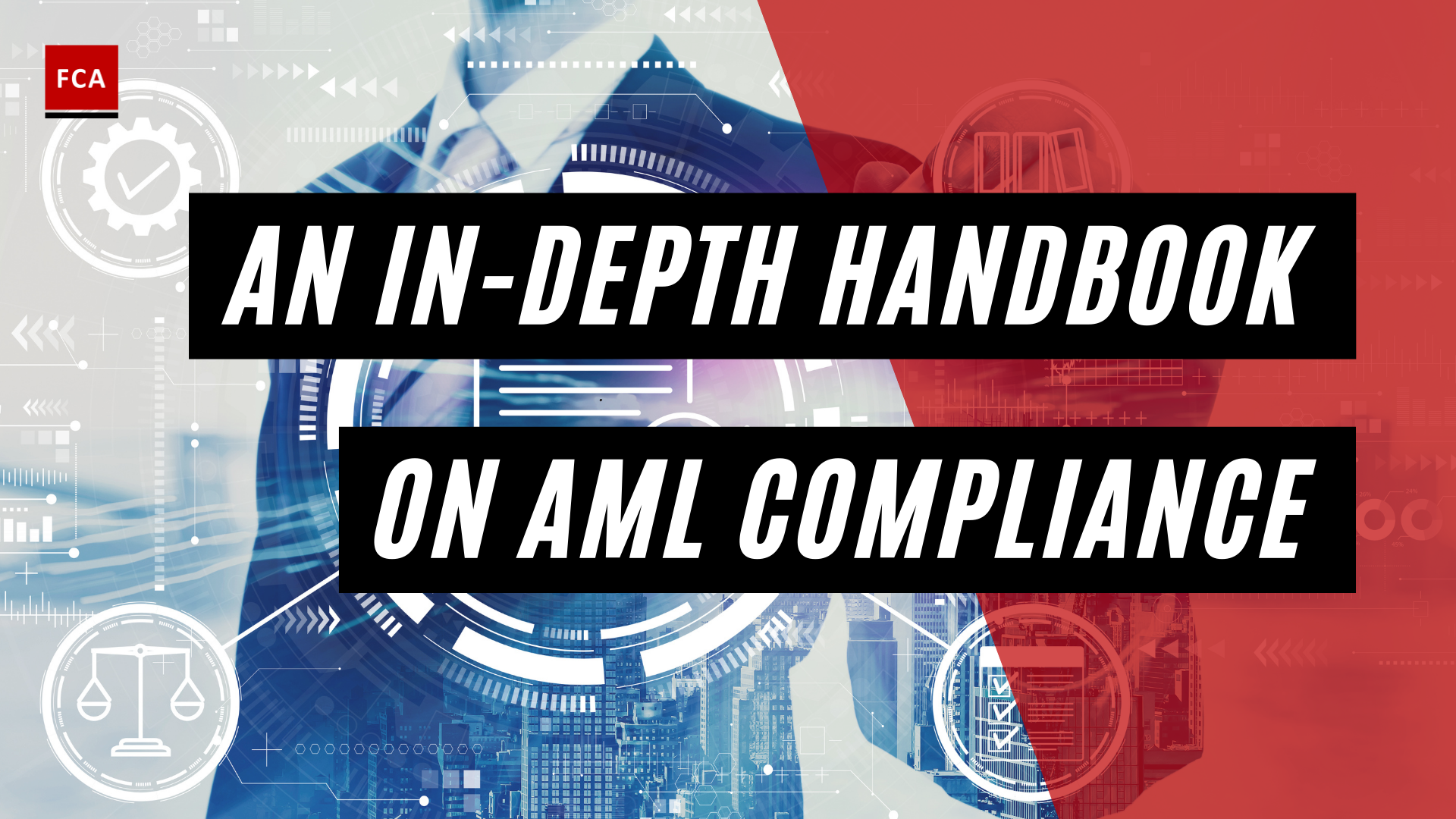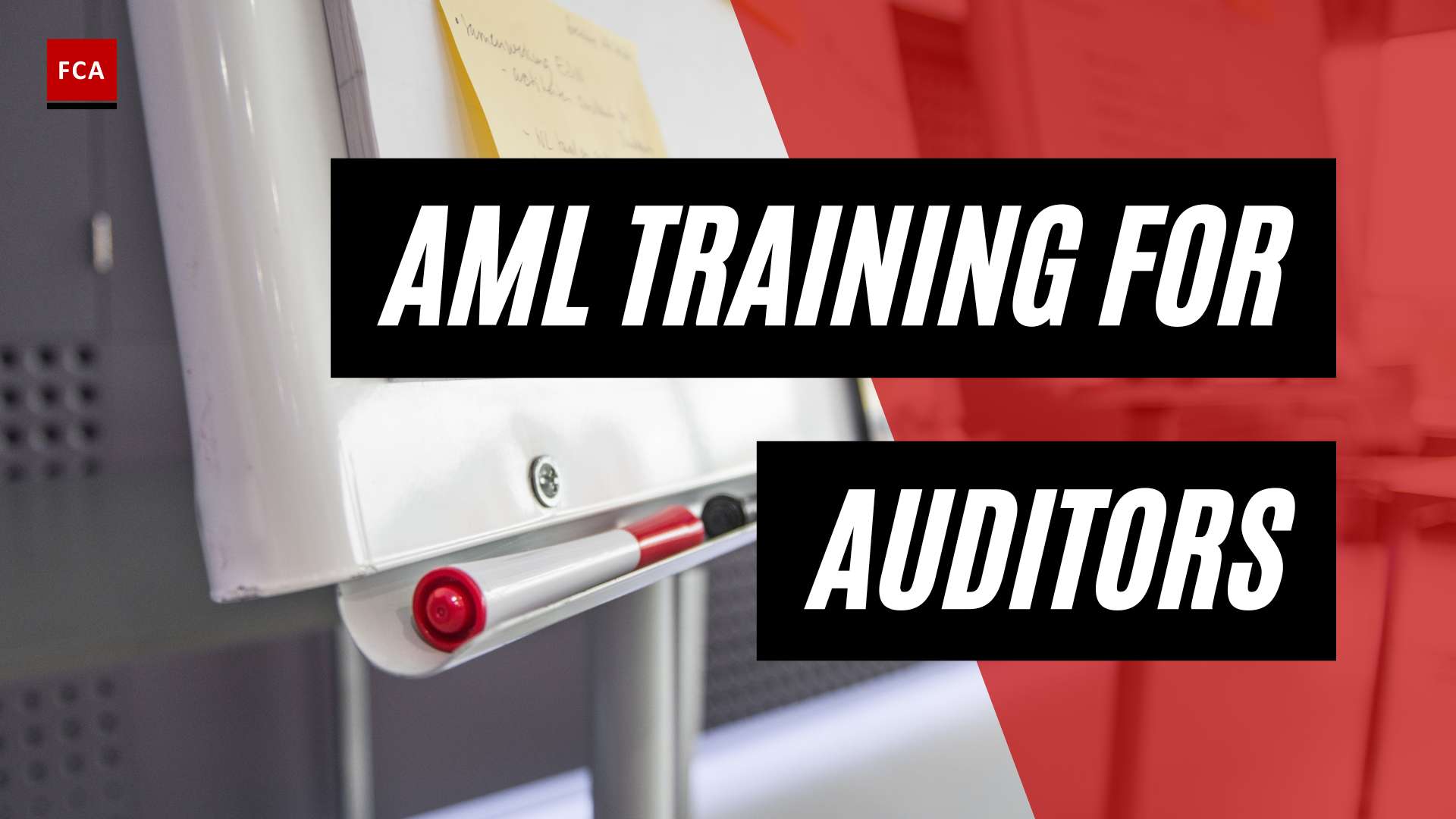AML Compliance Software: An Overview
In the fight against financial crimes, AML compliance software plays a crucial role in helping organizations detect and prevent money laundering, terrorist financing, and other illicit activities. By automating key compliance processes, AML compliance software enables financial institutions to enhance their risk management strategies and ensure regulatory compliance. This section provides an introduction to AML compliance software and highlights its benefits.
Introduction to AML Compliance Software
AML compliance software refers to a suite of regulatory technology (RegTech) solutions designed to streamline and strengthen Anti-Money Laundering (AML) compliance efforts. These software solutions leverage advanced technologies, such as artificial intelligence (AI) and machine learning, to automate various compliance processes. By doing so, they help financial institutions efficiently identify and mitigate potential risks associated with financial crimes.
Benefits of AML Compliance Software
The adoption of AML compliance software offers numerous benefits for financial institutions, including:
-
Enhanced Compliance Efficiency: AML compliance software automates labor-intensive tasks, such as customer due diligence (CDD), transaction monitoring, sanctions screening, and suspicious activity reporting (SAR). By reducing manual efforts, financial institutions can achieve greater operational efficiency and allocate resources effectively.
-
Improved Detection Accuracy: AML compliance software utilizes advanced AI and machine learning algorithms to enhance the detection of suspicious activities. These technologies can analyze vast amounts of data, identify patterns, and flag potentially illicit transactions more accurately. By reducing false negatives, financial institutions can better protect themselves against financial crimes.
-
Reduced False Positives: Traditional compliance processes often generate a high volume of false positives, requiring significant manual effort for review. AML compliance software leverages AI and machine learning to minimize false positives by continuously learning from historical data and refining detection algorithms. This reduction in false positives allows compliance teams to focus on genuine risks, thereby improving overall efficiency.
-
Operational Cost Reduction: Implementing AML compliance software can lead to significant cost savings for financial institutions. By automating compliance processes, organizations can reduce the need for manual labor and mitigate the risk of costly errors. Furthermore, AML compliance software helps prevent non-compliance fines, which can amount to billions of dollars, as reported by the Financial Crimes Enforcement Network (FinCEN) (Tookitaki).
The global AML compliance software market is expected to reach a value of $3.43 billion by 2026, with a compound annual growth rate (CAGR) of 14.7% from 2021 to 2026, indicating the growing recognition of the importance of AML compliance software in the financial industry.
In the next sections, we will explore the key features of AML compliance software, the role of AI and machine learning in enhancing detection accuracy, the importance of AML compliance software in risk management, and leading AML compliance software solutions available in the market.
Key Features of AML Compliance Software
AML compliance software is designed to assist organizations in automating various processes related to anti-money laundering compliance. These software solutions offer several key features that enable efficient and effective compliance management. Let’s explore some of the essential features of AML compliance software:
Customer Due Diligence (CDD)
Customer Due Diligence (CDD) is a critical component of AML compliance. AML compliance software helps organizations streamline and automate the CDD process. This feature enables the collection and verification of customer information, including identity, source of funds, and beneficial ownership. By utilizing advanced identity verification tools, such as document scanning and biometric authentication, AML compliance software ensures accurate and reliable customer due diligence.
Transaction Monitoring
Transaction monitoring is another vital feature offered by AML compliance software. It allows financial institutions and other regulated entities to monitor customer transactions in real-time, tracking and analyzing financial activities to identify suspicious patterns or behaviors. By leveraging advanced algorithms and rule-based systems, AML compliance software enables prompt detection of potential money laundering, terrorist financing, or other illicit activities. This helps organizations comply with reporting requirements and mitigate financial crime risks.
Sanctions Screening
Sanctions screening is an essential aspect of AML compliance, as it helps identify individuals, entities, or countries subject to sanctions or watchlists. AML compliance software incorporates robust sanctions screening capabilities, allowing organizations to screen customers, vendors, and counterparties against global sanctions lists and politically exposed persons (PEP) databases. By automating this process, AML compliance software helps organizations ensure compliance with international sanctions regulations and prevent illicit transactions.
Suspicious Activity Reporting (SAR)
AML compliance software facilitates the generation and submission of Suspicious Activity Reports (SARs) to regulatory authorities. This feature allows organizations to document and report any suspicious activities or transactions that may indicate potential money laundering or other criminal activities. By automating the SAR reporting process, AML compliance software ensures that the necessary information is captured accurately and in a timely manner, helping organizations fulfill their reporting obligations and cooperate with regulatory agencies.
Incorporating these key features, AML compliance software provides organizations with robust tools to enhance their anti-money laundering efforts and meet regulatory requirements seamlessly. By automating processes such as customer due diligence, transaction monitoring, sanctions screening, and suspicious activity reporting, AML compliance software enables businesses to detect and mitigate financial crime risks more effectively.
To explore leading AML compliance software solutions and considerations for choosing the right software for your organization, continue reading our sections on Leading AML Compliance Software Solutions and Considerations When Choosing AML Compliance Software.
AI and Machine Learning in AML Compliance Software
As technology continues to advance, the integration of AI (Artificial Intelligence) and machine learning in AML (Anti-Money Laundering) compliance software has revolutionized the way financial institutions detect and prevent financial crimes. These advanced technologies play a crucial role in enhancing detection accuracy and reducing false positives, providing significant benefits to compliance efforts.
Enhancing Detection Accuracy
The incorporation of AI and machine learning algorithms in AML compliance software has significantly improved the effectiveness of detecting suspicious activities. These technologies have the capability to analyze vast amounts of data and identify patterns that may indicate potential money laundering or other illicit activities. By leveraging historical data and continuously learning from new information, AI-powered systems can enhance the accuracy of identifying suspicious transactions.
AI algorithms can detect complex patterns and anomalies that may go unnoticed by traditional rule-based approaches. The ability to analyze large datasets and identify hidden connections allows compliance officers to uncover potential risks more efficiently. By leveraging AI technology, financial institutions can stay ahead of evolving money laundering techniques and proactively identify potential threats.
Reducing False Positives
False positives, which occur when legitimate transactions are flagged as suspicious, can overwhelm compliance teams and result in unnecessary investigations. This not only consumes valuable resources but also hampers operational efficiency. AI and machine learning capabilities in AML compliance software offer a solution to this challenge.
By continuously learning from historical data and user feedback, AI-powered systems can refine their detection models and reduce false positives. This iterative learning process enables the software to adapt to changing patterns and improve accuracy over time. The ability to distinguish between legitimate and suspicious transactions more effectively helps compliance officers focus their efforts on high-risk activities, saving time and resources.
In addition, AI-powered systems can employ risk-based scoring mechanisms to prioritize alerts based on their level of suspicion. By assigning risk scores to transactions, the software can prioritize the investigation of higher-risk cases, further optimizing efficiency and reducing false positives.
The integration of AI and machine learning in AML compliance software represents a significant advancement in the fight against financial crimes. These technologies enhance detection accuracy, enabling financial institutions to identify suspicious activities more effectively. Moreover, by reducing false positives, AI-powered systems enhance operational efficiency, allowing compliance teams to focus on high-risk cases and allocate resources more efficiently. With the ongoing development of AI and machine learning capabilities, the future of AML compliance looks promising in staying ahead of emerging financial threats.
The Role of AML Compliance Software in Risk Management
AML compliance software plays a crucial role in risk management for financial institutions. By automating various AML compliance processes, this software helps organizations streamline their operations, reduce costs, and mitigate the risk of non-compliance fines. Let’s explore two key aspects of the role of AML compliance software in risk management: operational cost reduction and mitigating non-compliance fines.
Operational Cost Reduction
Financial institutions face significant operational costs in implementing and maintaining effective AML compliance programs. Manual processes, such as manual customer due diligence and transaction monitoring, can be time-consuming and resource-intensive. However, AML compliance software enables institutions to automate these processes, resulting in operational cost reduction.
By automating customer due diligence (CDD) processes, AML compliance software helps institutions efficiently identify and verify customer identities, screen for potential risks, and assess the level of due diligence required. This automation reduces the need for manual data entry and repetitive tasks, allowing compliance teams to focus on higher-value activities.
Transaction monitoring is another critical process in AML compliance. AML compliance software utilizes advanced algorithms and rule-based engines to monitor customer transactions in real-time, flagging suspicious activities for further investigation. This automation significantly reduces manual effort and human error, leading to operational cost savings.
Mitigating Non-Compliance Fines
Non-compliance with AML regulations can result in substantial fines for financial institutions. Over the past decade, financial institutions paid over $5.6 billion in penalties for AML compliance failures, as reported by the Financial Crimes Enforcement Network (FinCEN) (Tookitaki). Major financial institutions, including HSBC, UBS, and Citigroup, have faced fines ranging from hundreds of millions to billions of dollars (Kychub).
AML compliance software helps institutions mitigate non-compliance fines by automating compliance processes and enhancing overall risk management strategies. By leveraging advanced technologies such as artificial intelligence and machine learning, these software solutions can improve detection accuracy and reduce false positives. This enables institutions to identify and investigate suspicious activities more efficiently, minimizing the risk of non-compliance.
Furthermore, AML compliance software ensures that financial institutions stay up to date with evolving regulatory requirements. The software incorporates regulatory updates and provides alerts and notifications to compliance teams, helping them maintain compliance with regional regulations and avoid potential fines.
By reducing operational costs and mitigating non-compliance fines, AML compliance software plays a vital role in risk management for financial institutions. These software solutions enable organizations to enhance their AML compliance programs, streamline processes, and effectively manage the risks associated with money laundering and financial crimes.
Leading AML Compliance Software Solutions
When it comes to AML compliance software solutions, several industry-leading providers offer robust and reliable platforms that help organizations effectively combat money laundering and financial crimes. Let’s explore three prominent AML compliance software solutions: FICO AML Compliance Software, SAS AML Compliance Software, and Nice Actimize AML Compliance Software.
FICO AML Compliance Software
FICO AML Compliance Software is highly regarded for its flexibility, ease of integration, and robust data analysis capabilities, as recognized by Gartner. This software empowers organizations to detect suspicious activities, automate compliance processes, and manage risk effectively.
Key Features of FICO AML Compliance Software:
- Advanced transaction monitoring and analytics for accurate detection of potential money laundering activities.
- Real-time identification of high-risk customers and entities through comprehensive customer due diligence (CDD) capabilities.
- Adaptable rules and scenario management to align with evolving regulatory requirements.
- Customizable reporting and audit trails to facilitate regulatory compliance and internal investigations.
SAS AML Compliance Software
SAS AML Compliance Software is widely recognized for its comprehensive features, strong analytical capabilities, and effective customer support, as highlighted by Gartner. This software provides organizations with advanced tools to identify and mitigate money laundering risks while maintaining regulatory compliance.
Key Features of SAS AML Compliance Software:
- Robust transaction monitoring capabilities to detect unusual patterns, suspicious activities, and potential money laundering schemes.
- Advanced analytics and machine learning algorithms to enhance detection accuracy and reduce false positives.
- Integrated case management system for efficient investigation and reporting of suspicious activities.
- Regulatory reporting modules to ensure compliance with AML regulations and streamline reporting processes.
Nice Actimize AML Compliance Software
Nice Actimize AML Compliance Software stands out for its user-friendly interface, customizable reporting, and efficient transaction monitoring capabilities, according to Gartner. This software solution empowers organizations to proactively identify and prevent money laundering activities while streamlining compliance operations.
Key Features of Nice Actimize AML Compliance Software:
- Comprehensive transaction monitoring and analytics to detect and prevent suspicious activities, including money laundering, terrorist financing, and fraud.
- Advanced entity resolution capabilities for accurate customer risk assessment and compliance with AML regulations.
- User-configurable workflows and case management functionalities to streamline investigations and reporting.
- Configurable rules and scenarios to adapt to changing regulatory requirements.
While FICO AML Compliance Software, SAS AML Compliance Software, and Nice Actimize AML Compliance Software are renowned in the industry, there are other notable AML compliance software solutions available, such as Refinitiv World-Check Risk Intelligence and Trulioo (Lightico Blog). When selecting the right AML compliance software for your organization, consider factors such as advanced identity verification tools, integration and customization capabilities, and compliance with regional regulations. These features will enable you to implement an effective AML compliance program that aligns with your organization’s specific needs and regulatory requirements.
Considerations When Choosing AML Compliance Software
When selecting the right AML compliance software for your organization, it’s essential to consider several key factors. The software should provide advanced identity verification tools, integration and customization capabilities, and compliance with regional regulations.
Advanced Identity Verification Tools
AML compliance software should offer advanced identity verification tools to ensure accurate and secure customer identification. These tools enable secure collection of identity information, adjust friction based on real-time risk signals, and enhance understanding of risk with features like device fingerprinting and behavioral signals (Persona).
To effectively combat fraud, the software should be able to uncover and block fraud rings by leveraging link analysis to connect risky accounts. It should also provide efficient investigation and case resolution with a configurable case management hub. Integration with third-party data sources and platforms can further enhance the capabilities of the software (Persona).
Integration and Customization Capabilities
Seamless integration and customization capabilities are crucial when choosing AML compliance software. The software should be able to integrate with your existing systems and workflows, allowing for smooth data flow and reducing manual effort. This integration ensures that compliance processes are streamlined and efficient.
Customization capabilities allow organizations to tailor the software to their specific needs. This flexibility enables the software to adapt to evolving regulatory requirements and internal policies. By customizing the software, you can optimize its functionality and ensure that it aligns with your organization’s unique compliance needs.
Compliance with Regional Regulations
Compliance with regional regulations is of utmost importance when selecting AML compliance software. Different countries and regions have specific requirements and frameworks for anti-money laundering and counter-terrorist financing. The software should comply with these regulations and provide the necessary features to meet the specific requirements of each jurisdiction.
AML compliance software should enable screening against global sanction, warning, and politically exposed person (PEP) lists. It should also facilitate automated negative news checks and integrated know your business (KYB) and know your customer (KYC) processes. Compliance with regional regulations may also involve age verification capabilities to ensure compliance with age restrictions and regulations (Persona).
By considering these factors, organizations can choose AML compliance software that not only meets regulatory requirements but also provides the necessary tools and flexibility to effectively combat money laundering and financial crime. It is important to review the cookie policy of the software provider’s website to understand the types of cookies used and their purpose, as AML compliance software is typically considered necessary for the operation of the site (Finscan).
AML Transaction Monitoring Software
To effectively combat financial crime and ensure compliance with Anti-Money Laundering (AML) regulations, financial institutions rely on AML transaction monitoring software. This software plays a vital role in tracking and analyzing financial transactions in real-time, allowing for the identification of suspicious activities related to money laundering, terrorist financing, or other illegal activities (Sanction Scanner).
Real-Time Tracking of Customer Transactions
AML transaction monitoring software enables financial institutions to automatically track billions of transactions instantly, responding to AML, Countering the Financing of Terrorism (CFT), and Know Your Customer (KYC) requirements. By continuously monitoring customer transactions, the software can identify patterns, anomalies, and potential red flags that may indicate illicit activity. This real-time tracking capability allows for timely intervention and response to suspicious transactions, safeguarding against financial crimes.
Prompt Detection of Suspicious Activities
With the ability to evaluate past and current customer interactions, AML transaction monitoring software assists businesses in promptly detecting suspicious activities. By leveraging predefined rules and algorithms, the software can identify transactions that deviate from normal customer behavior or exhibit characteristics associated with money laundering or other illicit activities. When suspicious activities trigger these predefined rules, the software generates an alarm, halts the transaction, and prompts review by the firm’s Compliance or Risk Department.
Reporting Potential Criminal Activity
AML transaction monitoring software is essential for complying with AML, CFT, and KYC regulations. Detected criminal activities are reported to regulatory authorities through a Suspicious Activity Report (SAR). These reports play a crucial role in aiding regulatory bodies in identifying and investigating potential financial crimes. By promptly reporting potential criminal activity, financial institutions contribute to the overall effort to combat money laundering, terrorist financing, and other illicit financial activities.
The use of AML transaction monitoring software is instrumental in assisting businesses with regulatory compliance and mitigating financial crime risks. It enables real-time tracking of customer transactions, evaluation of customer interactions, prompt detection of suspicious activities, and compliance with AML regulations. By leveraging this software, businesses can reduce errors, enhance analysis accuracy, and ensure compliance with AML regulations, ultimately protecting themselves from penalties and reputational damage associated with financial crimes.
To learn more about AML compliance software, explore leading solutions such as FICO AML Compliance Software, SAS AML Compliance Software, and Nice Actimize AML Compliance Software in our dedicated section on AML Compliance Software Solutions.
The Importance of AML Compliance Programs
In the fight against money laundering and other financial crimes, the implementation of robust Anti-Money Laundering (AML) compliance programs is essential. These programs serve as the foundation for organizations to detect, prevent, and combat illicit activities. Let’s explore the key components of AML compliance programs, the role of compliance officers, and the importance of training and ongoing monitoring.
Components of AML Compliance Programs
A comprehensive AML compliance program should consist of various components that work together to ensure adherence to regulatory requirements and mitigate the risks associated with money laundering and terrorist financing. These components may include:
-
Written Policies and Procedures: AML compliance programs should have well-documented policies and procedures that outline how people, processes, and systems will function to meet obligations. These policies provide a clear roadmap for compliance efforts and allocate resources to areas of greatest threats (CPA Canada).
-
Risk Assessment: Conducting a thorough risk assessment is crucial for identifying and understanding the specific money laundering risks that an organization may face. The assessment helps in prioritizing resources and implementing appropriate controls to mitigate these risks.
-
Customer Due Diligence (CDD): CDD processes involve verifying the identity of customers, assessing their risk profiles, and monitoring their transactions. It allows organizations to understand the nature of their customers’ activities and detect any suspicious behavior.
-
Transaction Monitoring: Transaction monitoring involves the ongoing surveillance of customer transactions to identify potentially suspicious activities. By analyzing patterns and deviations from normal behavior, organizations can flag transactions that require further investigation.
-
Sanctions Screening: Sanctions screening entails screening customers and their transactions against various watchlists, such as government sanctions lists and politically exposed persons (PEP) lists. This helps organizations ensure compliance with international sanctions and avoid engaging in prohibited activities.
-
Suspicious Activity Reporting (SAR): SAR processes involve the reporting of suspicious activities to the appropriate regulatory authorities. It enables organizations to play an active role in combating financial crimes by providing information that may contribute to investigations.
The Role of Compliance Officers
Compliance officers play a vital role in ensuring the effectiveness of AML compliance programs. They are responsible for overseeing and implementing the program, ensuring that it aligns with regulatory requirements and industry best practices. Some key responsibilities of compliance officers include:
-
Understanding Business Operations: Compliance officers must have a deep understanding of the organization’s business operations, products, and services. This knowledge allows them to identify potential risks and implement appropriate controls.
-
Remaining Current with Regulations: Staying up-to-date with the ever-evolving AML regulations and industry trends is crucial for compliance officers. They must continually monitor changes in laws and regulations, ensuring that the organization adapts its compliance program accordingly.
-
Resource Allocation: Compliance officers must have access to the necessary resources within the organization to ensure the effective implementation of the AML compliance program. This includes sufficient staffing, technology infrastructure, and training.
Training and Ongoing Monitoring
Training is a critical aspect of any effective AML compliance program. It ensures that employees understand their roles and responsibilities in detecting and reporting suspicious activities. Training programs should include onboarding training for new employees, ongoing training to keep everyone informed about emerging risks and regulatory changes, and role-specific advanced training to ensure consistent reporting of unusual activities (CPA Canada).
Ongoing monitoring is another essential component of AML compliance programs. It involves the regular review and assessment of the program’s effectiveness. By utilizing AML compliance software, organizations can enhance their monitoring efforts through machine learning and data-analytics tools. This enables the identification of potential weaknesses or vulnerabilities in the program, allowing for timely adjustments and improvements (CPA Canada).
By implementing strong AML compliance programs, organizations demonstrate their commitment to combatting financial crimes and protecting the integrity of the financial system. Compliance officers, training, and ongoing monitoring are key pillars that support the effectiveness of these programs. Through these efforts, organizations can enhance their ability to detect, prevent, and report suspicious activities, contributing to a safer and more transparent financial environment.
Measuring the Effectiveness of AML Programs
In the realm of Anti-Money Laundering (AML), measuring the effectiveness of AML programs is of paramount importance. AML compliance software plays a crucial role in this process, aiding in detecting and preventing financial crimes, such as money laundering and terrorist financing. It enables organizations to enhance their AML programs and ensure regulatory compliance (Finscan).
The Role of AML Compliance Software
AML compliance software is comparable to necessary cookies that make a website usable by enabling basic functions. Similarly, effective AML compliance software is indispensable for ensuring the functionality and security of AML programs (Finscan). It provides organizations with powerful tools and capabilities to effectively monitor and manage their AML efforts.
By leveraging advanced technologies such as AI and machine learning, AML compliance software assists in automating various compliance processes. It helps organizations streamline their operations, improve detection accuracy, and reduce false positives. Through features like customer due diligence (CDD), transaction monitoring, sanctions screening, and suspicious activity reporting (SAR), the software enables proactive identification and reporting of potentially illicit activities.
Furthermore, AML compliance software serves as a central repository for storing and analyzing vast amounts of data related to customer transactions, enabling comprehensive monitoring and analysis. It facilitates the identification of patterns, trends, and anomalies that may indicate suspicious activities or potential risks.
Ongoing Monitoring and Reviewing
A key aspect of measuring the effectiveness of AML programs is ongoing monitoring and reviewing. AML compliance software plays a critical role in this continuous evaluation process. It provides organizations with real-time insights into their AML activities, allowing them to assess the effectiveness of their controls and make necessary adjustments.
Through customizable dashboards and comprehensive reporting functionality, AML compliance software enables compliance officers and risk management teams to monitor key metrics and indicators. These metrics may include the number of suspicious activity reports filed, transaction monitoring alerts generated, and the outcome of investigations.
By analyzing these metrics, organizations can identify areas of strength and areas that require improvement within their AML programs. They can proactively address any deficiencies, enhance their risk mitigation strategies, and ensure compliance with regulatory requirements.
Moreover, AML compliance software supports ongoing training and education initiatives. It facilitates the tracking of employees’ completion of AML training modules and monitors their understanding of AML policies and procedures. This continuous education and awareness help maintain a strong culture of compliance within the organization.
In summary, AML compliance software is an essential component of measuring the effectiveness of AML programs. It empowers organizations to monitor, review, and enhance their AML efforts through advanced technology, ongoing monitoring, and comprehensive reporting. By leveraging the capabilities of AML compliance software, organizations can strengthen their risk management practices, mitigate non-compliance fines, and protect themselves against financial crimes.








